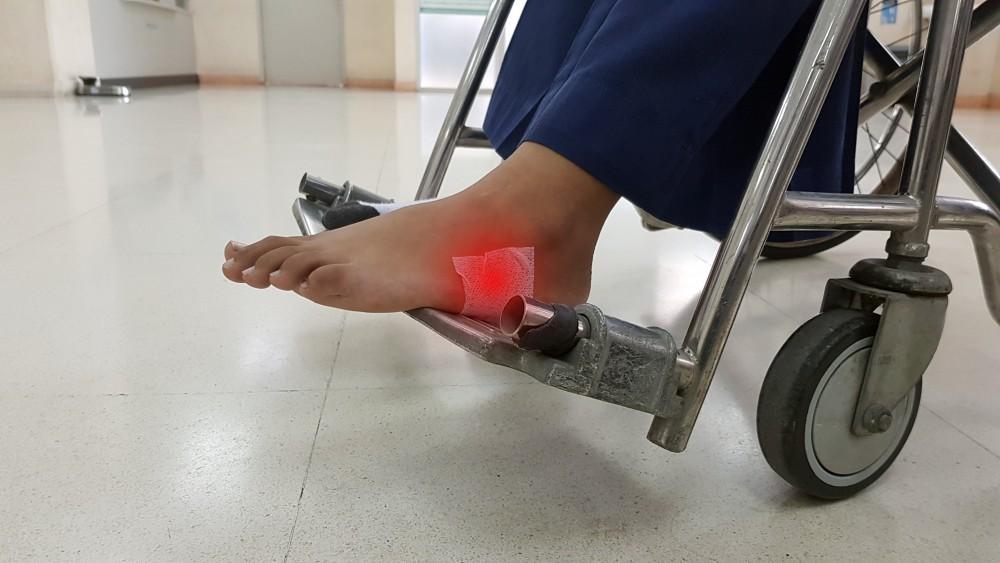Diabetes can cause a lot of different problems affecting many organs, including Ulcers on your feet. While these sores may seem harmless, they can lead to much more significant issues. Keep reading to learn why you should never let a foot ulcer go.
Diabetes is a complex disease that affects many different areas of your body. This is especially true if your blood sugar is not under control. One of the complications of this condition is problems with your feet or diabetic foot ulcers. These are sores on your feet that don’t seem to heal.
At VAYU Advanced Wound Clinic & Hyperbarics in San Antonio, Texas, we have a team of experts in wound care, including diabetic foot ulcers. Dr. Badam is our wound care specialist who helps you get your ulcer on its way to being fully healed.
Causes Of Diabetic Foot Ulcers
When you’re healthy, your body turns food into glucose and uses it for energy. The glucose is distributed in your bloodstream, and when it spikes, your pancreas secretes insulin to balance your blood sugar out. This keeps your glucose at an average level.
However, when you have diabetes, your body either doesn’t produce enough insulin to manage your blood sugar or can’t effectively use the insulin that your pancreas produces. When your blood sugar continues to rise, it causes a lot of different issues.
One of the problems caused by high blood sugar is issues with your feet, including neuropathy and ulcers. Diabetes typically leads to ulcers on your feet when your glucose isn’t kept in a normal range. Other causes of this condition include:
- Chronic irritation of your feet
- Wounds on your feet
- Nerve damage
- High blood sugar
If you have diabetes, you’re already at risk for developing diabetic foot ulcers. However, ulcers can be prevented by taking care of your feet and making sure you keep your blood sugar levels within a normal range. The higher your blood sugar, the more likely you will suffer an ulcer that may lead to bigger issues if not treated.
Symptoms Of An Ulcer
Diabetic foot ulcers can pop up at any time, especially if you don’t take good care of your feet. But how do you know if it’s an actual diabetic ulcer or just a regular wound on your foot?
The most common areas for ulcers to affect are the balls of your feet and your big toes. If you don’t check your feet often, you may have an ulcer and not even know it until it becomes irritated or infected. However, there are some early signs to look out for, including:
- Drainage from your foot
- Foul-smelling discharge
- Swelling
- Redness
- Pain or irritation
If you notice any of the above symptoms, it’s best for your health that you make an appointment with Dr. Badam as soon as possible. At your appointment, she examines your foot and grades your ulcer using the Wagner Ulcer Classification System. This system grades ulcers from zero to five in severity.
Complications Of Untreated Ulcers
While an ulcer might not seem like it’s the end of the world, it’s a big issue if you have diabetes. Because your nerves can become damaged, you may not know you even have an ulcer until it’s in advanced stages.
When an ulcer is past the initial stage, you may notice black tissue around the wound. This is known as eschar and is a sign of compromised blood flow. This is the first sign of a real issue.
If the ulcer isn’t taken care of, it may lead to gangrene around the ulcer. Gangrene is when the healthy tissue in your foot dies due to decreased blood flow and infection. If you have gangrene, you may notice a foul odor or have pain in your foot near the ulcer.
Gangrene is a serious condition and may lead to severe complications, including amputation of your toes or your entire foot.
Diabetic foot ulcers can affect your tissues not only on the surface of your foot but down into your muscles and bones as well. This could cause conditions like osteomyelitis, which is an infection deep in your bone.
Ultimately, ulcers in your feet can lead to tissue damage and death, which could result in the loss of your foot altogether. If you have any signs of a problem, getting treatment from Dr. Badam as soon as possible is your best bet at getting the ulcer to heal correctly.
Don’t let your foot ulcer turn into something more severe; call our office in San Antonio today at 210-651-1112. You can also send us a secure message on our website.

